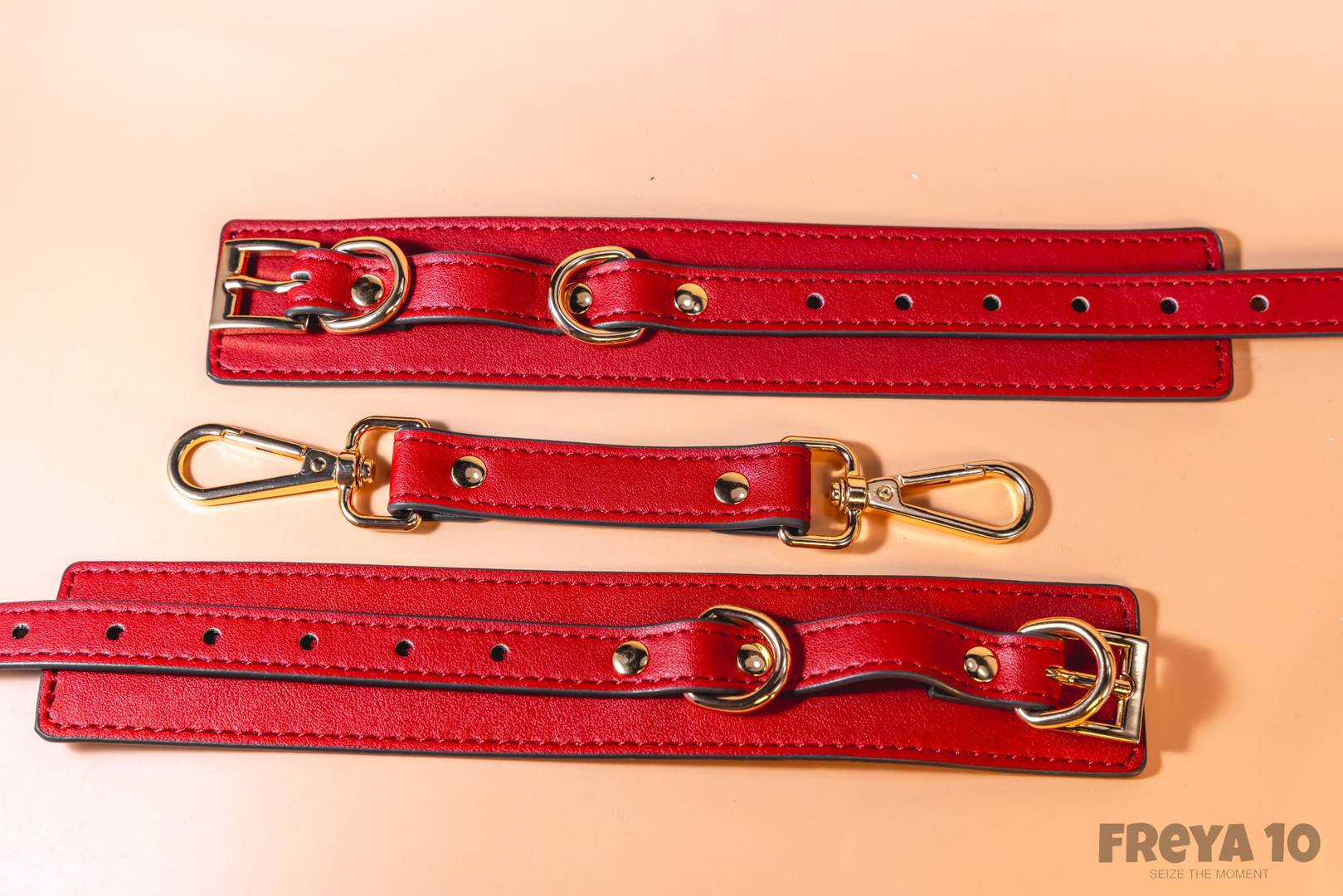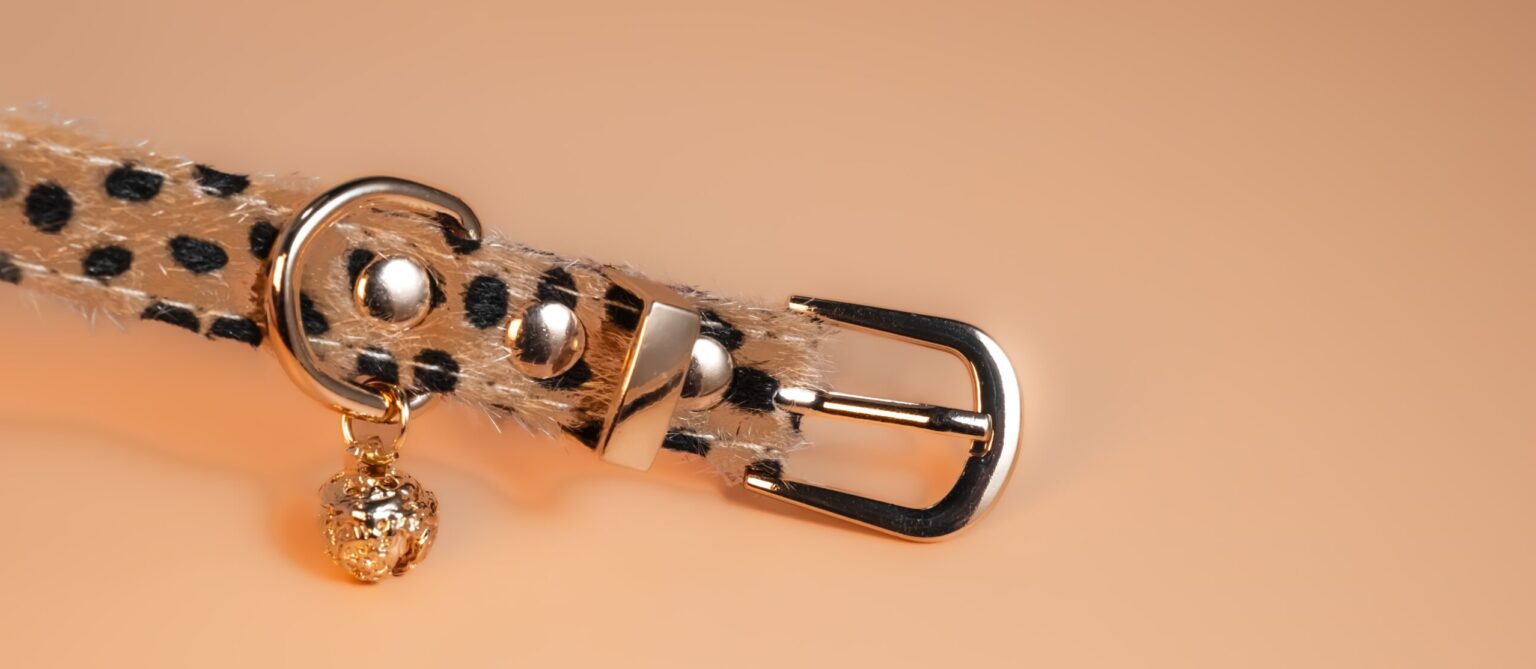
10 Dec The Making of Leather Handcuffs: Craft, Creativity, and a Touch of Playfulness
Leather handcuffs—just the name alone hints that they’re not your typical leather accessory. They blend traditional craftsmanship with modern design, functioning as practical tools while also serving as unique artistic expressions—sometimes with a little cheeky edge. If you think leather handcuffs are merely functional, think again. They’re not just a piece of equipment, but a small, finely crafted work of art. So, how do these playful, alluring accessories go from a piece of leather to a beautifully finished product? Let’s dive into the process!
Selecting the Leather: Picking the “Right” Hide
The first step in making leather handcuffs is choosing the right leather. High-quality leather is like a fine wine—it needs to be carefully selected and treated to bring out its best qualities. Generally, cowhide or calfskin are used for handcuffs, as they’re durable, soft to the touch, and have just the right amount of strength to withstand wear and tear. Some high-end cuffs may even use vegetable-tanned or chrome-tanned leather, adding a unique shine and tactile quality.
But it’s not just about the feel; the “personality” of the leather matters too. The hide needs to be strong yet flexible, ensuring the cuffs not only look great but can handle the weight and pressure of their intended use. From texture to color, every detail of the leather will influence the final product’s style—whether it’s classic, bold, or something entirely unconventional.
Design & Cutting: Precision with a Creative Twist
Once the leather is selected, it’s time for design and cutting. This stage is arguably the most artistic part of the process. The designer must consider the wearer’s wrist size and create a pattern that ensures the cuffs fit comfortably yet securely. The key here is comfort—not just in the sense of being “gentle,” but ensuring the cuffs fit snugly without causing discomfort during wear.
The design phase involves more than just function; it’s about creating a visually appealing piece as well. Should the cuffs feature a traditional buckle or a modern metal ring? Every little detail, from the position of the fasteners to the placement of decorative elements, must be thoughtfully considered. Not only does the design need to be practical, but it also needs to make a bold statement. After all, leather handcuffs are not just functional—they’re wearable art.
Once the design is settled, the leather is carefully cut into the predetermined shapes. This step requires precision—any deviation could affect the final outcome. A well-cut edge gives the handcuffs a polished, sophisticated look—just like a perfectly tailored suit. Every inch of the leather must be cut just right to ensure the cuffs are as flawless as possible.
Punching & Stitching: Crafting with Precision and Patience
With the leather cut to shape, the next step is punching and stitching. Punching holes may seem simple, but it’s a technique that requires expertise. Craftspeople use specialized leather hole punches to ensure every hole is evenly spaced and perfectly sized. Once the holes are in place, metal rings or fasteners can be threaded through, securing the design.
Next comes stitching, which is the most delicate part of the process. Leather handcuffs are typically stitched by hand using the traditional “whipstitch” method, a technique where two needles and waxed thread are alternately passed through the leather to create tight, secure seams. This hand-stitching not only ensures durability but also adds an elegant touch to the cuffs. The craftsman must be meticulous, keeping the stitching neat, evenly spaced, and perfectly aligned.
The stitching process can be time-consuming, but it’s where patience pays off. It’s almost meditative—every stitch reinforces the bond between the craftsman and the material, creating a sense of satisfaction and completion as the cuffs begin to take shape.
Adding Metal Hardware: Where Function Meets Flair
The metal hardware is often what gives leather handcuffs their personality. Whether it’s a minimalist silver buckle or bold brass rivets, the metal elements are as much about style as they are about function. These pieces—buckles, D-rings, rivets—are essential for fastening the cuffs and ensuring they stay securely in place.
When adding the metal hardware, the craftsman carefully secures each piece, ensuring that the fasteners are tight and won’t loosen with use. Whether it’s through rivets, screws, or other methods, these metal accents enhance both the visual appeal and the durability of the cuffs. The metal elements should not just be functional—they should also contribute to the overall aesthetic, complementing the leather and creating a cohesive, striking look.
Final Touches & Quality Check: Perfection in Every Detail
Once the leather handcuffs are stitched and the hardware is attached, the final step is polishing and quality checking. The craftsman will carefully inspect every detail—checking the stitching, ensuring the hardware is secure, and making sure the leather is smooth and free of imperfections. They may even apply a special leather conditioner to enhance the leather’s shine and protect it from the elements.
Each pair of leather handcuffs undergoes a thorough inspection before it’s deemed ready for use. Only after every detail has been perfected—every stitch, every rivet, every edge—does the handcuff move from the workshop to its new owner. The result is a piece of functional art that carries with it the craftsman’s dedication to precision and quality.
Conclusion: More Than Just Handcuffs—They’re Works of Art
The process of making leather handcuffs is more than just a craft; it’s a celebration of creativity, craftsmanship, and individuality. From the careful selection of leather to the intricate stitching and thoughtful addition of metal hardware, every pair of leather handcuffs is a unique, handcrafted masterpiece. Whether they’re used as an accessory, a statement piece, or simply as an artistic expression, leather handcuffs are more than just functional items—they’re wearable art, combining form and function in a way that’s both captivating and powerful.



No Comments